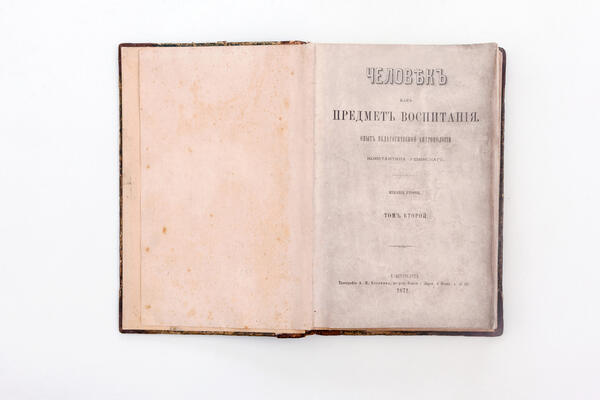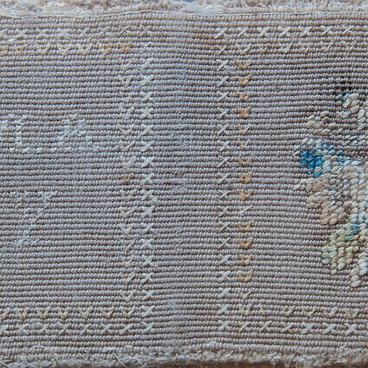The second volume of the work of the teacher and writer Konstantin Ushinsky ‘Man as a subject of education. Experience of pedagogical anthropology’ is kept on the desktop in Ilya Ulyanov’s study.
When Ulyanov senior was a student at Kazan Imperial University, he attended lectures and read books by progressive educators of his time: Carl Lenstrem, who was head of the newly opened pedagogy department in Kazan, the mathematician Nikolay Lobachevsky, and Peter Kotelnikov, doctor of philosophy.
Ulyanov was especially interested in the ideas of Konstantin Ushinsky, the founder of scientific pedagogy in Russia. Ushinsky was one of the first to address pedagogical anthropology, a set of disciplines that studied the man in all his manifestations, from his origins and development to socialization.
Ushinsky saw children as the subject of education. The scholar wrote that it was important to take into account the child’s physiology, psychology and anatomy, heredity, and environment. In addition, according to Ushinsky’s writings, the creative potential of the people, national character, traditions, the need to learn their native language, culture, and history was important in education. The pedagogue believed that the degree of development of the state depends on the education of the people.
While working as an inspector and later director of public schools in Simbirsk Governorate, Ilya Ulyanov became a follower of Konstantin Ushinsky’s pedagogical system and developed his pedagogical concept.
‘The main aim of his educational activities was to serve the people through the school, which was to educate a well-educated and strong-minded man, able to struggle against “the unfavorable conditions of life”, — Ulyanov’s relatives recalled.
When Ulyanov senior was a student at Kazan Imperial University, he attended lectures and read books by progressive educators of his time: Carl Lenstrem, who was head of the newly opened pedagogy department in Kazan, the mathematician Nikolay Lobachevsky, and Peter Kotelnikov, doctor of philosophy.
Ulyanov was especially interested in the ideas of Konstantin Ushinsky, the founder of scientific pedagogy in Russia. Ushinsky was one of the first to address pedagogical anthropology, a set of disciplines that studied the man in all his manifestations, from his origins and development to socialization.
Ushinsky saw children as the subject of education. The scholar wrote that it was important to take into account the child’s physiology, psychology and anatomy, heredity, and environment. In addition, according to Ushinsky’s writings, the creative potential of the people, national character, traditions, the need to learn their native language, culture, and history was important in education. The pedagogue believed that the degree of development of the state depends on the education of the people.
While working as an inspector and later director of public schools in Simbirsk Governorate, Ilya Ulyanov became a follower of Konstantin Ushinsky’s pedagogical system and developed his pedagogical concept.
‘The main aim of his educational activities was to serve the people through the school, which was to educate a well-educated and strong-minded man, able to struggle against “the unfavorable conditions of life”, — Ulyanov’s relatives recalled.




